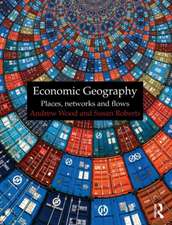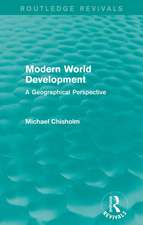Regions in Recession and Resurgence: Routledge Library Editions: Economic Geography
Autor Michael Chisholmen Limba Engleză Paperback – 28 feb 2017
| Toate formatele și edițiile | Preț | Express |
|---|---|---|
| Paperback (1) | 270.20 lei 6-8 săpt. | |
| Taylor & Francis – 28 feb 2017 | 270.20 lei 6-8 săpt. | |
| Hardback (1) | 1000.27 lei 6-8 săpt. | |
| Taylor & Francis – 23 mar 2015 | 1000.27 lei 6-8 săpt. |
Preț: 270.20 lei
Preț vechi: 325.30 lei
-17% Nou
Puncte Express: 405
Preț estimativ în valută:
51.70€ • 54.12$ • 43.03£
51.70€ • 54.12$ • 43.03£
Carte tipărită la comandă
Livrare economică 31 martie-14 aprilie
Preluare comenzi: 021 569.72.76
Specificații
ISBN-13: 9781138855304
ISBN-10: 1138855308
Pagini: 234
Dimensiuni: 156 x 234 mm
Greutate: 0.34 kg
Ediția:1
Editura: Taylor & Francis
Colecția Routledge
Seria Routledge Library Editions: Economic Geography
Locul publicării:Oxford, United Kingdom
ISBN-10: 1138855308
Pagini: 234
Dimensiuni: 156 x 234 mm
Greutate: 0.34 kg
Ediția:1
Editura: Taylor & Francis
Colecția Routledge
Seria Routledge Library Editions: Economic Geography
Locul publicării:Oxford, United Kingdom
Public țintă
General, Postgraduate, and UndergraduateCuprins
1. Introduction 2. The Changing Context 3. Some Economic Debate 4. Neo-classical and Keynesian Theories of Regional Growth. 5. Neo-classical and Keynesian Theories of Regional Growth in the Light of Experience 6. Searching For A New Way 7. Taking the Supply Side Seriously 8. The Location Needs of Modern Firms 9. Local Initiative.
Descriere
The world economy has undergone rapid evolution in recent decades, along with changes in the importance of industries and their organization, and sharp changes in the fortunes of regions. . In order to show the relvance of these changes to regional economies, the book focuses on the different schools of economic thought – from the neo-classical, through Keynesians to Marxist/radical ideas and monetarist/supply-side thiking – providing a brief description of their structure in non-spatial terms. The way these theories map into contrasting ideas regarding the mechanisms of regional economic growth is then explained. The book concentrates on developed economies and explicitly seeks to confront theory with fact, fact with theory. Bringing together non-spatial economic thery, regional growth theory and relevant empirical data, this book is intended for students in geography and regional economics but will also be of interest for those studying politics and government.



































